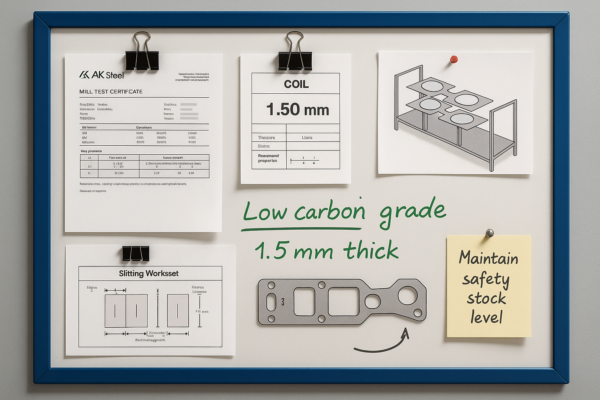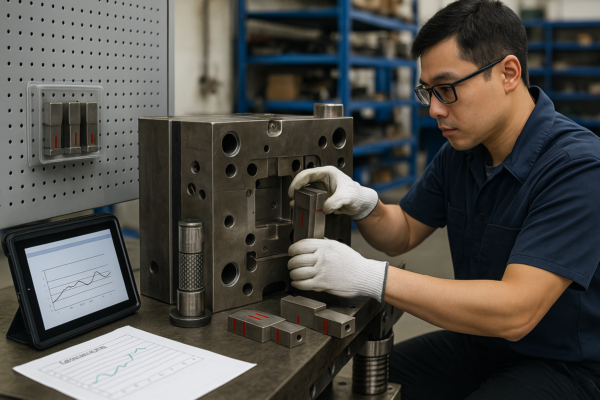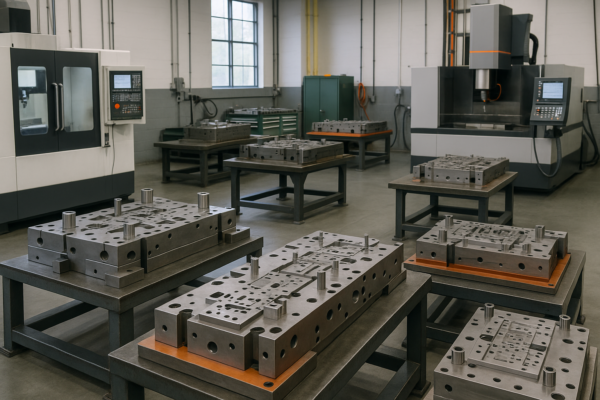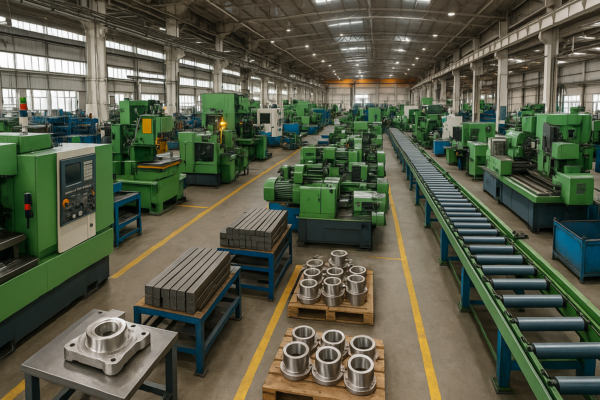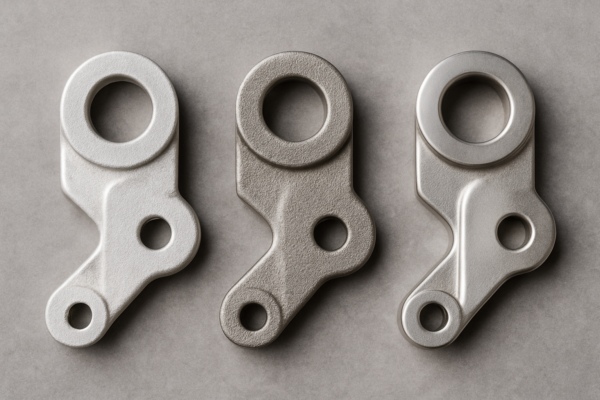Top Tips for Reducing Tooling Investment in High-Volume Metal Stamping?

High tooling costs stop many buyers from scaling up metal stamping projects1. Most companies struggle to control these costs while demanding speed, quality, and flexibility. However, you can achieve all three by combining smart design, the right die strategy2, in-house supplier capabilities, and proactive planning.
Reducing tooling investment in high-volume metal stamping1 starts with early design simplification, choosing suitable die types2, selecting in-house tooling suppliers, and leveraging accurate order forecasts. This approach cuts costs and lead time while improving part quality.
As a sourcing manager or engineer, you must find reliable solutions, not just the lowest price. This guide shares actionable steps—refined through decades of experience—to help you minimize tooling costs1 and maximize project value2.
How Does Early Design Optimization Lower Tooling Investment?

The biggest savings start before tooling is built. If you optimize part design for manufacturability1 at the drawing stage, you avoid expensive rework and tool revisions2 later.
Complex features—like deep draws1, tight bends, or mixed wall thicknesses—demand costly, multi-step dies. Simplifying geometry, using standard hole shapes, and relaxing unnecessary tolerances dramatically reduces die complexity2 and cost.
I always advise buyers to:
- Standardize hole sizes and locations1
- Limit tight bends and radii
- Keep material thickness uniform
- Remove non-essential ribs or cutouts
- Specify tolerances based on function, not habit2
For example, one client removed two non-critical embosses from their housing. This simple change saved 18% on tooling1 and shaved a week off lead time2.
DFM Tactics That Deliver Immediate Savings
| Design Element | Impact on Tooling | Prime’s Recommendation |
|---|---|---|
| Deep draws1 | Increases die steps | Limit draw depth or use multi-piece dies |
| Tight radii2 | Increases breakage risk | Use larger radii where possible |
| Non-round holes | Custom punch cost | Opt for round, standard sizes |
| Mixed wall thickness | Complicates stamping | Use single gauge when possible |
Prime reviews all RFQs for DFM potential1, offering practical redesign advice2 before quoting. Early optimization unlocks years of savings.
What’s the Best Tooling Type: Progressive or Stage Dies?

The right die type can make or break your ROI. Progressive dies1 deliver speed and automation but require a larger upfront investment. Stage (manual) dies2 cost less to build but demand more operator labor and slow throughput.
If your project is mature and runs at high volume, progressive dies1 slash per-part cost and improve quality. For small batches, prototypes, or projects likely to change, stage dies2 let you test designs and adjust quickly with less risk.
Prime always analyzes your volume, product lifecycle, and change potential to suggest the most cost-effective option1. Many successful clients start with stage dies for prototypes, then switch to progressive dies for production2.
Progressive vs. Stage Dies: A Side-by-Side Comparison
| Criteria | Progressive Die | Stage Die |
|---|---|---|
| Upfront investment | Higher | Lower |
| Production speed1 | Very fast | Moderate to slow |
| Change flexibility2 | Low | High |
| Labor requirement | Minimal | Significant |
| Best for | Long runs, stable designs | Short runs, evolving designs |
Prime’s integrated process allows seamless migration1 from stage to progressive dies, keeping your time-to-market2 short.
How Does In-House Tooling Reduce Delays and Errors?

Communication breakdowns cause most tooling delays. When your supplier owns the entire tooling process1, you get direct answers and faster solutions.
In-house tooling facilities mean the same engineers who build your dies also support sampling, revisions, and production. This eliminates long wait times and reduces errors1 common with outsourced toolmakers.
Working with a supplier like Prime, you gain:
- Single point of contact from engineering to delivery1
- Real-time design reviews and DFM optimization
- Rapid troubleshooting if issues arise during sampling
- Lower logistics costs—no shipping tools between factories2
- Consistent maintenance and lifetime support for your dies
In-House Tooling vs. Outsourced: Real-World Differences
| Aspect | In-House Tooling | Outsourced Tooling |
|---|---|---|
| Lead time1 | Shorter, more predictable | Longer, less control |
| Communication | Direct, faster feedback | Indirect, potential for errors |
| Cost transparency2 | High | Often unclear or variable |
| Tool modifications | Rapid, on-demand | Slow, with extra transport time |
Prime’s in-house die shop reduces average project lead time1 by 20–30%, enabling more aggressive launch schedules.
How to Leverage Volume Forecasting for Better Tooling Deals

Suppliers reward customers who plan ahead. Sharing reliable order forecasts1 gives you powerful leverage to reduce tooling investment2.
If you provide a 12–36 month volume projection, suppliers can offer deferred tooling payment1, rebates, or even free tooling for high-volume, long-term contracts. This approach also gives you priority in production scheduling2 and better logistics support.
I worked with a European buyer who cut tooling payment in half by committing to an annual purchase schedule1. In turn, they received fast delivery and locked-in per-piece pricing2.
Forecasting Strategies That Cut Tooling Costs
- Break forecasts down by quarter or year
- Negotiate deferred or staged tooling payments1
- Link tooling discounts to volume milestones
- Request bundled tooling and maintenance packages2
- Build supply agreements for priority production and stable pricing
| Annual Volume | Prime’s Typical Support |
|---|---|
| < 10,000 | Standard tooling, flexible MOQ |
| 10,000–50,000 | Tooling rebates, free tool maintenance1 |
| >50,000 | Deferred/free tooling, priority production |
| Multi-year contract | Locked pricing, strategic partnership2 |
Prime treats your forecasts as a strategic asset1—helping you secure lower costs and guaranteed supply2.
Why Is Certification Non-Negotiable for Global Buyers?

Buyers worldwide demand traceability and consistent quality. Suppliers with ISO 9001:2015 certification1 and strict QC2 deliver every lot to the same standard.
Prime supports every shipment with material certificates1, inspection reports, and batch traceability2. This protects your business from costly recalls, customer returns, and reputational risk.
Our QC team performs 100% inspection1 for critical features, so you receive defect-free parts, every time.
| Certificate | Buyer Benefit |
|---|---|
| ISO 9001:20152 | Consistent, audit-ready QC |
| RoHS/CE (on request) | Global market compliance |
| Material traceability | Quick response to any issue |
| Custom QC documents | Supports your internal audits |
Choose certified suppliers like Prime for peace of mind—every batch, every shipment.
How Effective Communication Drives Down Costs

Fast, accurate communication prevents errors and lost time. Prime’s approach:
- Assign a dedicated English-speaking project manager1 to every client
- Provide detailed weekly progress reports2 with photos and videos
- Confirm all design changes in writing
- Send real-time inspection and packaging updates
- Offer quick access to engineers for urgent support
This ensures your specifications are understood and met the first time, preventing expensive delays1 or rework2.
| Step in Process | Prime’s Communication Standard |
|---|---|
| RFQ/Inquiry | 24-hour initial response1 |
| Drawing review | Free DFM and feasibility advice |
| Sampling | Step-by-step photo and video updates |
| Mass production | Weekly QC reports and shipment tracking2 |
| After-sales support | Immediate troubleshooting, warranty help |
You succeed when your supplier keeps you informed at every stage.
How to Maximize Your Return on Every Tooling Dollar
To fully maximize ROI on tooling investment:
- Involve your supplier during the design phase for DFM input
- Choose die types that fit both current and future volume
- Work only with suppliers who provide in-house tooling and maintenance1
- Leverage volume forecasts for better deals and cost sharing
- Demand international quality certification2 and detailed QC records
- Communicate all requirements clearly and confirm changes in writing
Prime implements each of these best practices—delivering lasting savings1, reliable quality2, and fast, flexible support.
FAQs: Reducing Tooling Investment in High-Volume Metal Stamping
1. How do I cut my tooling investment without hurting quality?
Simplify your part design, use standard features1, and partner with in-house, ISO-certified suppliers2. Negotiate deals based on forecasted volume.
2. Can Prime support urgent or prototype orders?
Yes. Prime offers rapid prototyping1, sample runs, and fast tooling2 for urgent projects, delivering globally.
3. What packaging standards does Prime use?
Export-grade, moisture-proof1, and anti-rust packaging2, customized for sea, air, or land shipment, with photographic documentation.
4. How does Prime guarantee part quality?
We provide full inspection reports, material certificates, and batch traceability1 with every shipment.
5. What info do I need to get a fast, accurate quote?
Send 2D/3D drawings, material specs1, volume estimate, and required certifications2 or packaging needs.
6. What if I need design changes after ordering?
Prime’s in-house tool shop1 quickly adjusts dies and updates parts to your new specs, minimizing downtime2.
7. Can I visit Prime’s factory for an audit?
Absolutely. Prime welcomes global buyers for factory audits1, virtual tours2, and on-site engineering discussions.
Conclusion
Early design changes, the right die strategy, reliable in-house tooling, and accurate forecasting dramatically reduce tooling investment1. Work with Prime for certified quality2, fast delivery, and one-on-one project support—trusted worldwide.
Contact Prime now for your free consultation, rapid quote, and custom stamping or CNC solution:
Website: https://primecustomparts.com/
Email: [email protected]
Experience faster project launches, lower costs, and peace of mind—Prime is your partner in global metal part sourcing.
-
Explore this link to discover effective strategies that can help you minimize your tooling costs and maximize efficiency. ↩ ↩ ↩ ↩ ↩ ↩ ↩ ↩ ↩ ↩ ↩ ↩ ↩ ↩ ↩ ↩ ↩ ↩ ↩ ↩ ↩ ↩ ↩ ↩ ↩ ↩ ↩ ↩ ↩ ↩ ↩ ↩ ↩ ↩ ↩ ↩ ↩ ↩ ↩ ↩ ↩
-
Learn about the significance of certified quality in manufacturing processes and how it ensures reliability and customer satisfaction. ↩ ↩ ↩ ↩ ↩ ↩ ↩ ↩ ↩ ↩ ↩ ↩ ↩ ↩ ↩ ↩ ↩ ↩ ↩ ↩ ↩ ↩ ↩ ↩ ↩ ↩ ↩ ↩ ↩ ↩ ↩ ↩ ↩ ↩ ↩ ↩ ↩

